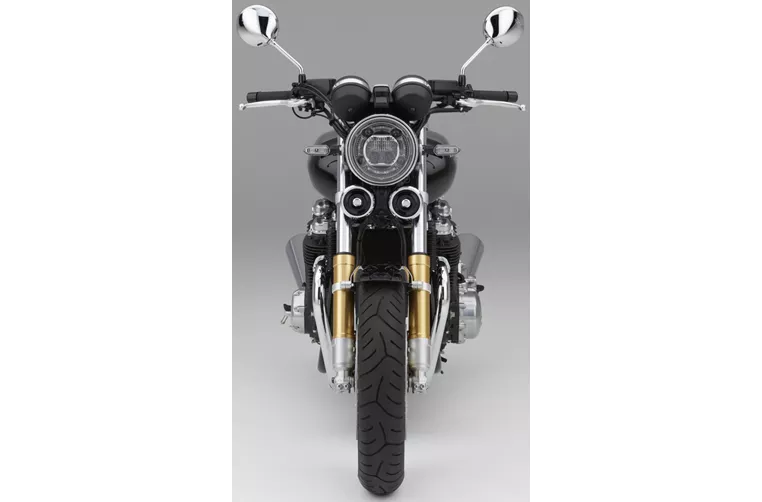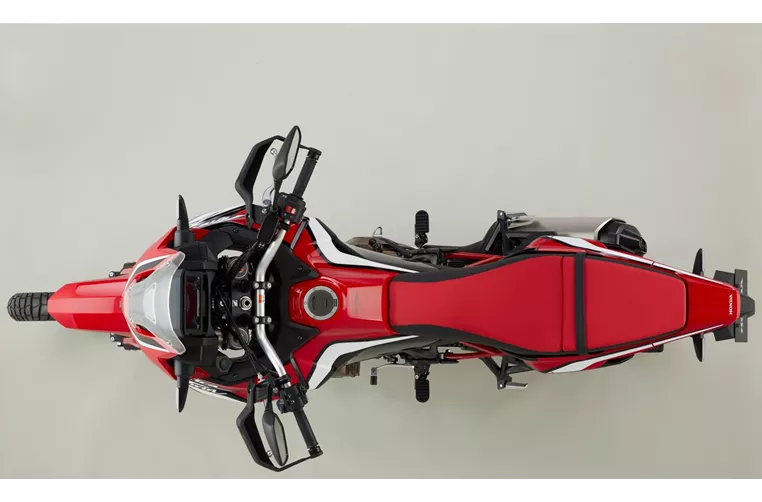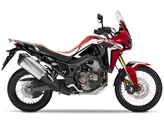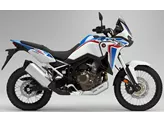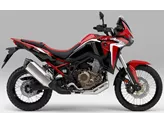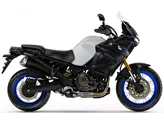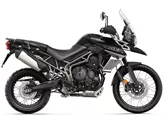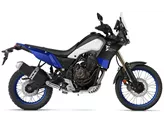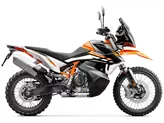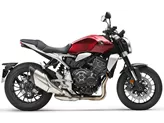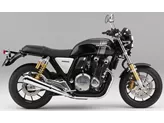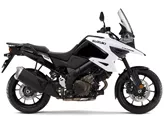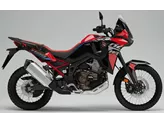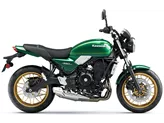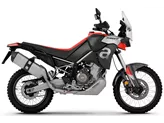Honda CB1100 RS 2017 vs. Honda CRF1100L Africa Twin 2020
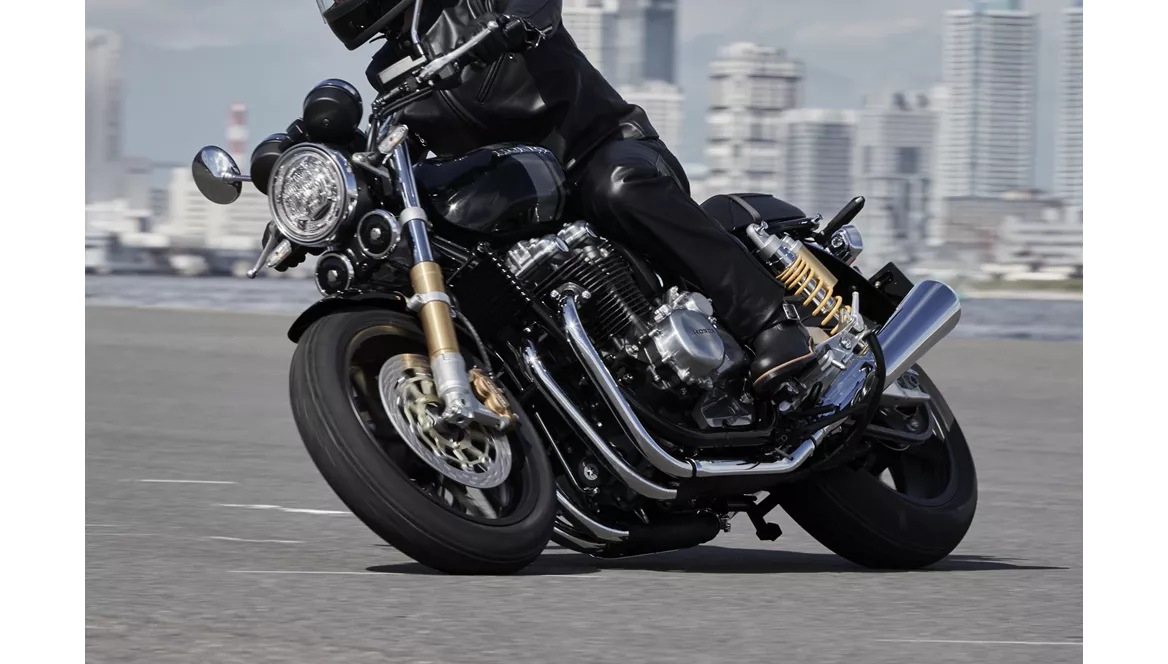
Honda CB1100 RS 2017
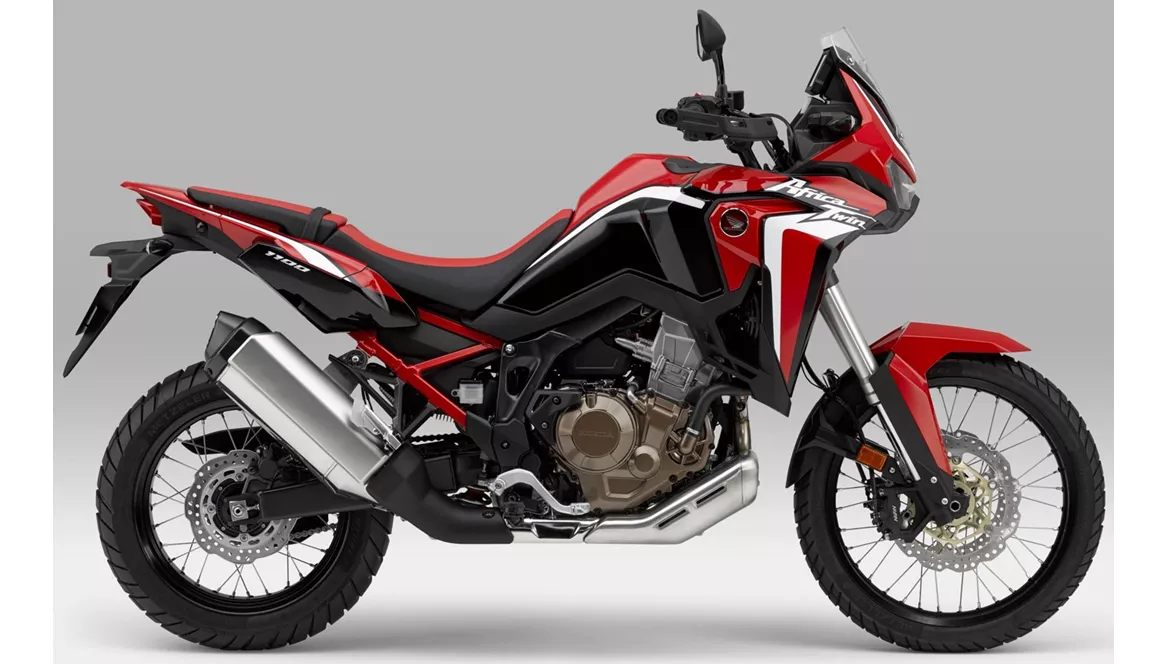
Honda CRF1100L Africa Twin 2020
Visão geral - Honda CB1100 RS 2017 vs Honda CRF1100L Africa Twin 2020
The Honda CB1100 RS 2017 and the Honda CRF1100L Africa Twin 2020 are two different motorcycles with distinct features and purposes.
Starting with the Honda CB1100 RS 2017, it is a naked bike that offers a pleasant and high-quality finish. It is equipped with an inline four-cylinder engine with a displacement of 1140cc, producing 90 horsepower and 91 Nm of torque. The engine is fuel-injected and features an electric starter. The transmission is chain-driven, and the cooling system is oil/air-cooled. The bike has a double cradle steel frame and a rake of 64 degrees. The front suspension consists of telescopic forks with a diameter of 41mm and pre-load adjustment, while the rear suspension is a swingarm with dual shocks and pre-load adjustment. The front brakes are dual disc with a diameter of 310mm and four-piston radial calipers, and the bike is equipped with ABS for advanced rider assistance. The dimensions include a front tire width of 120mm, a front tire diameter of 17 inches, a rear tire width of 180mm, a rear tire diameter of 17 inches, a wheelbase of 1485mm, and a seat height of 795mm. The bike weighs 252kg (with ABS) and has a fuel tank capacity of 16.8 liters.
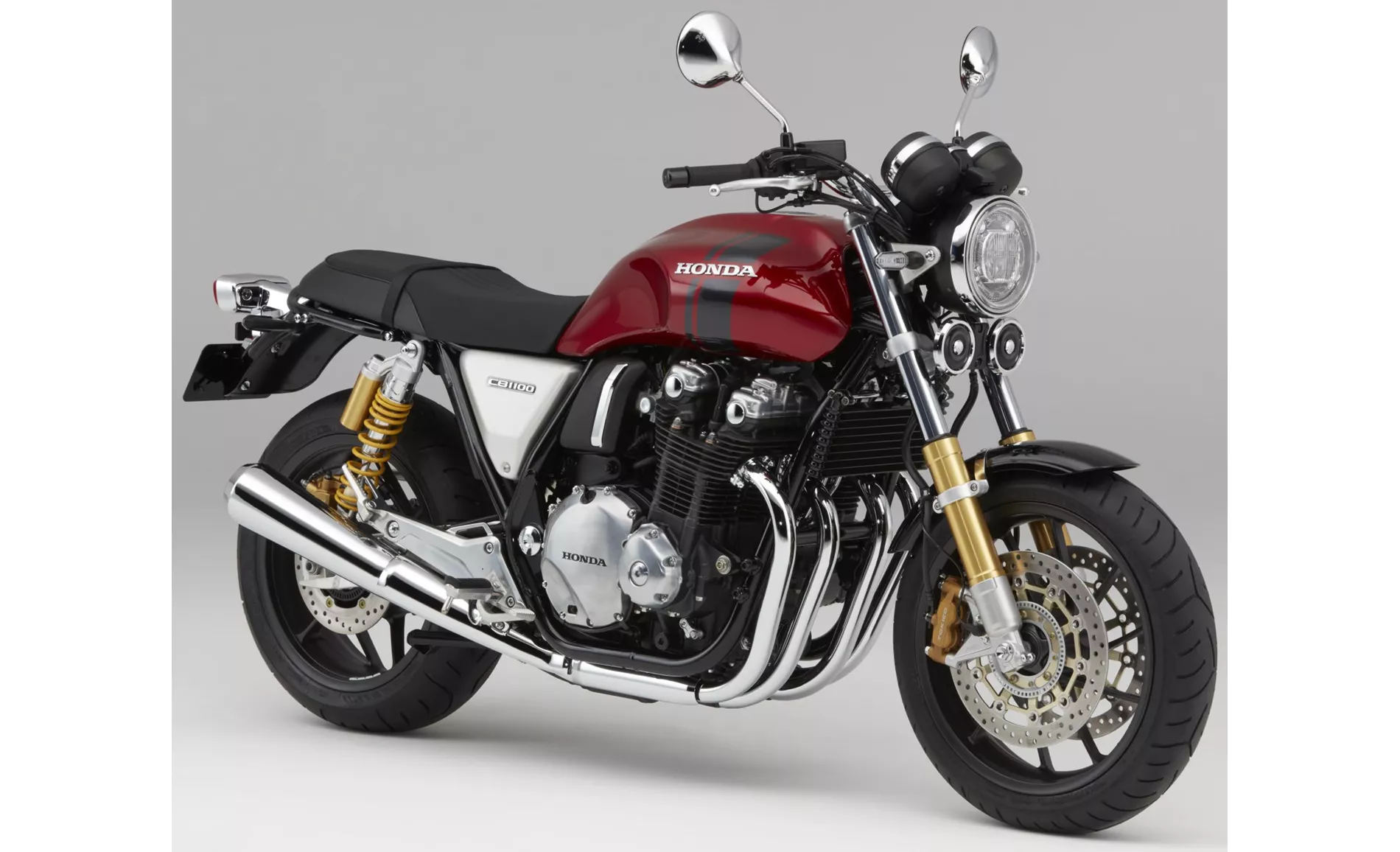
Honda CB1100 RS 2017
On the other hand, the Honda CRF1100L Africa Twin 2020 is an enduro motorcycle designed for off-road adventures. It is powered by an inline twin-cylinder engine with a displacement of 1084cc, producing 102 horsepower and 105 Nm of torque. The engine is fuel-injected and features an electric starter. Similar to the CB1100 RS, the transmission is chain-driven. However, the cooling system is liquid-cooled, providing better heat dissipation. The bike has a double cradle steel frame and a rake of 62.5 degrees. The front suspension consists of upside-down telescopic forks with a diameter of 45mm and adjustable compression, pre-load, and rebound settings. The rear suspension is a swingarm with a monoshock and adjustable compression, pre-load, and rebound settings. The front brakes are dual disc with a diameter of 310mm and four-piston radial calipers, featuring radial and wave technology. In terms of rider assistance, the Africa Twin is equipped with ABS, various riding modes, ABS for curves, throttle-by-wire, traction control, and anti-wheelie. The dimensions include a front tire width of 90mm, a front tire diameter of 21 inches, a rear tire width of 150mm, a rear tire diameter of 18 inches, a wheelbase of 1575mm, and a seat height of 850mm. The bike weighs 226kg (with ABS) and has a fuel tank capacity of 18.8 liters.
In terms of strengths, the Honda CB1100 RS 2017 offers a pleasant and high-quality finish, excellent engine tuning, and a wide choice of tires. On the other hand, the Honda CRF1100L Africa Twin 2020 boasts a high torque engine, sophisticated electronic rider aids, a well-functioning DCT (Dual Clutch Transmission) option, a color touchscreen display, good ergonomics, long-distance capability, and a windshield suitable for off-road riding.
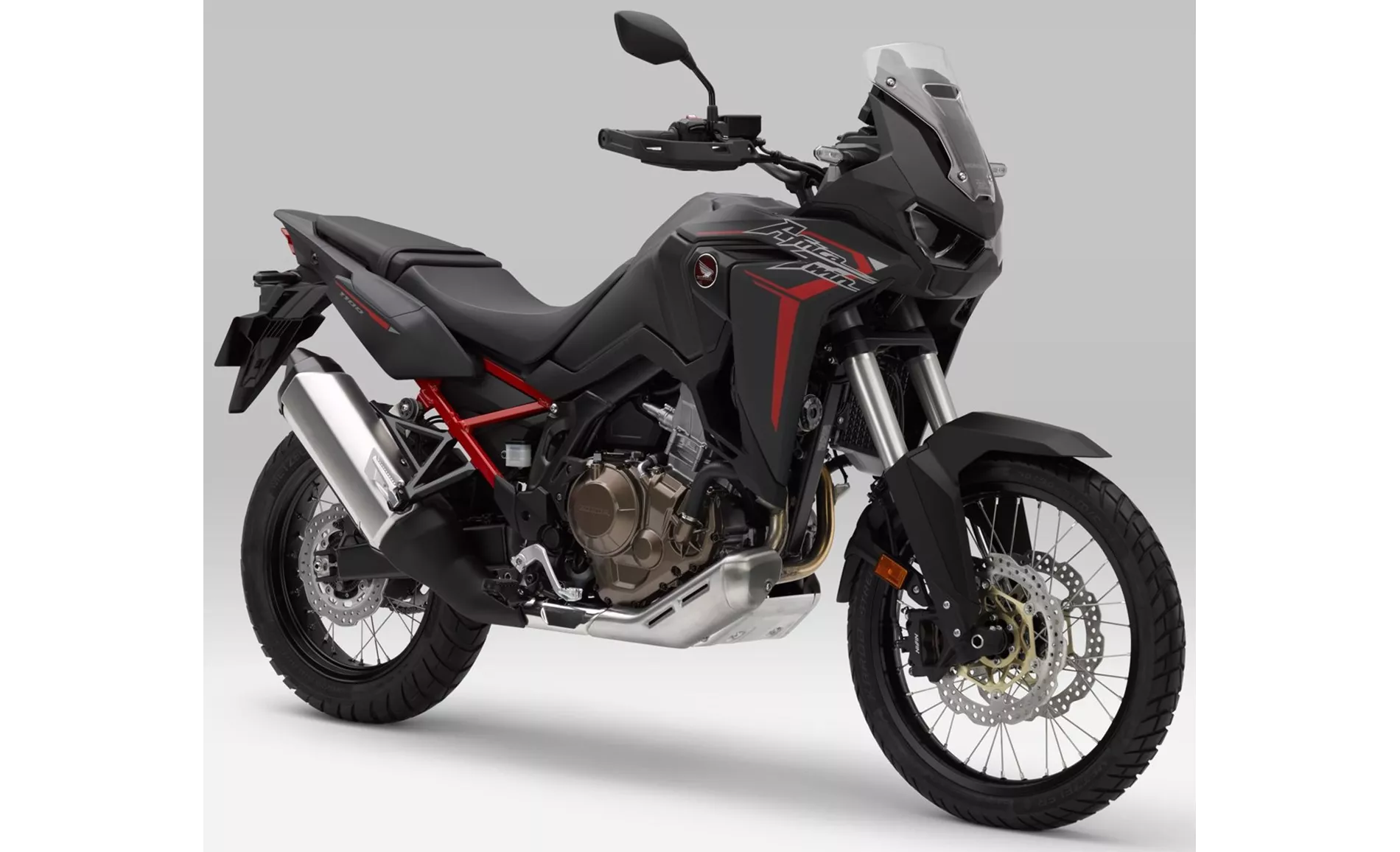
Honda CRF1100L Africa Twin 2020
However, both bikes have their weaknesses. The Honda CB1100 RS 2017 suffers from limited lean angle clearance and a slightly unbalanced turning behavior with stock tires. On the other hand, the Honda CRF1100L Africa Twin 2020 has a cluttered left handlebar with buttons that may not be very intuitive, less robust handguards for off-road use, and a windshield that provides only reasonable protection.
In summary, the Honda CB1100 RS 2017 is a stylish and well-finished naked bike with a powerful engine, while the Honda CRF1100L Africa Twin 2020 is a versatile and capable adventure motorcycle with advanced electronic features. The choice between the two ultimately depends on the rider's preferences and intended usage.
Especificações técnicas Honda CB1100 RS 2017 em comparação com Honda CRF1100L Africa Twin 2020
Prós e contras em comparação
Prós e contras em comparação
Honda CB1100 RS 2017
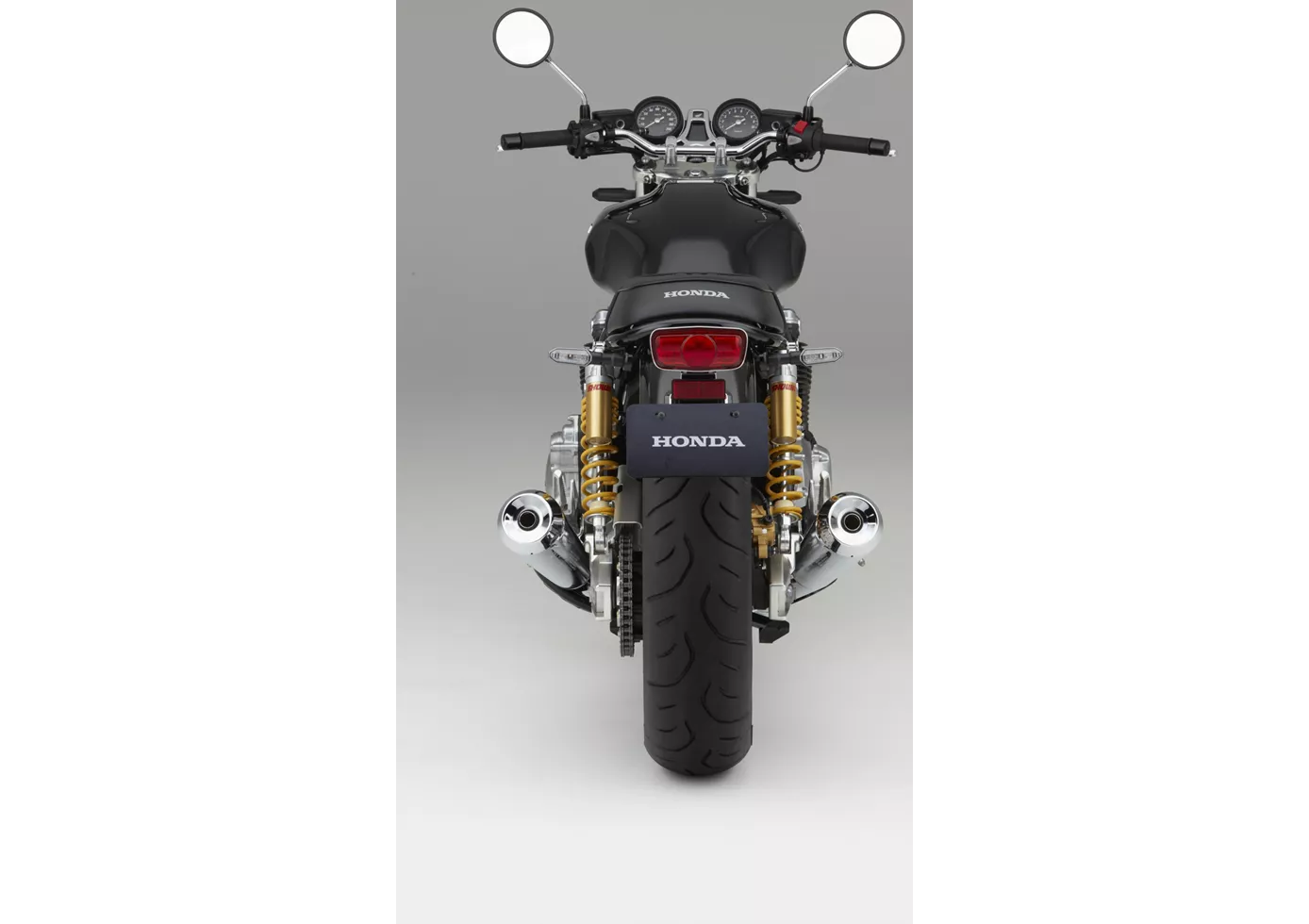
As opiniões dividem-se em relação ao RS. Para muitos, não parece tão terroso e honesto como o EX e, de um modo geral, não parece coerente. Mas, no final do dia, não se encontra plástico onde deveria haver metal. As jantes de 17 polegadas oferecem uma maior escolha de pneus. Os pneus de série podem não ser a melhor escolha para esta mota.
Honda CRF1100L Africa Twin 2020
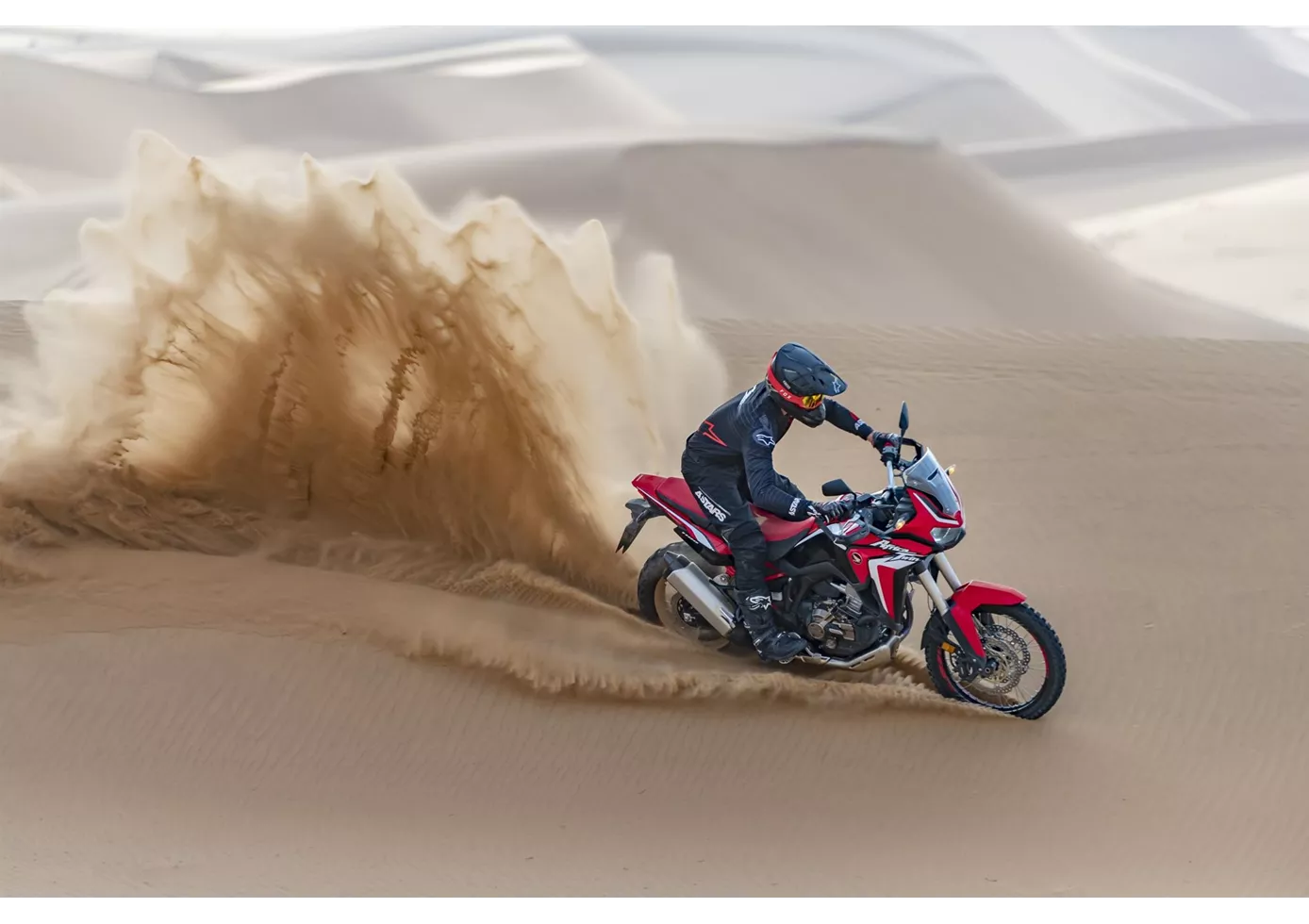
Para mim, a Africa Twin é uma enduro de turismo como deve ser uma enduro de turismo. Isso já era verdade para o modelo antecessor e não mudou com o aumento do deslocamento e da potência. Porque este último permaneceu gerenciável em 102 hp, e a Honda até conseguiu perder alguns quilos em comparação com a CRF1000L. Assim, manteve-se versátil, funcionando tão bem na autoestrada como fora de estrada. O chassis absorve quase todos os solavancos, o motor mantém-se soberano em todas as situações, a ergonomia e o conforto dos bancos são exemplares. Uma moto para todos os dias, bem como para a grande viagem - onde quer que seja.
Comparação de preços Preço médio de mercado Honda CB1100 RS vs Honda CRF1100L Africa Twin
There are a few key differences between a Honda CB1100 RS 2017 and a Honda CRF1100L Africa Twin 2020. It takes less time to sell a Honda CB1100 RS with 78 days compared to 106 days for a Honda CRF1100L Africa Twin. Since model year 2017 1000PS.de editors have written 7 reviews for the Honda CB1100 RS and 28 reviews for the Honda CRF1100L Africa Twin since model year 2020. The first review for the Honda CB1100 RS was published on 04/10/2016 and now has more than 59 000 views. This compares to more than 109 400 views for the first review on Honda CRF1100L Africa Twin published on 23/09/2019.
